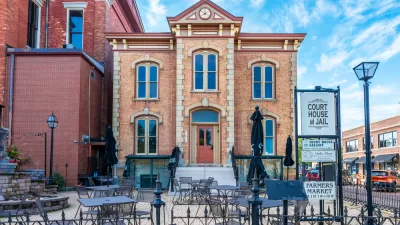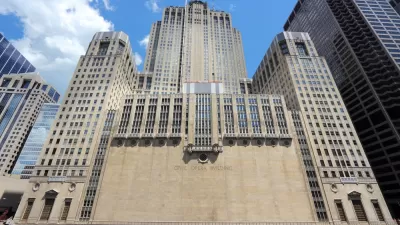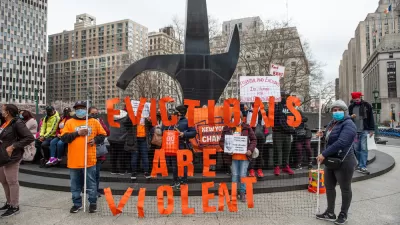A riverfront revival was well underway in Chicago. Then the pandemic hit. How can a splashy new downtown commercial development expect to fare in Covid's world?

The Bank of America Tower recently opened on the Chicago riverfront as the tallest new office building in the city in 30 years by topping out at 816 feet.
With Chicago's central business district (CBD) getting hammered during the pandemic, Blair Kamin offers three reasons to pause and take notice of the new building.
For one, the Bank of America Tower "represents a strong sign of confidence" in the CBD despite its current travails. For another reason, the building will add a $25 million boost in property tax revenue to a city government that is, similar to the CBD, suffering the effects of the economic downturn caused by the pandemic.
Finally, "The modernist design, a mix of bold structural drama, attractive public spaces and reflective-glass banality, will leave its mark on downtown long after the COVID-19 pandemic has passed," writes Kamin.
The new building is located on a site described by Kamin as high profile and transit oriented at 110 N. Wacker Drive. Prominently, the new building is the latest sign of how the Chicago River has become a focal point of civic and commercial life.
"Skyscrapers, like the neighboring Civic Opera Building at 20 N. Wacker, once turned their back on the polluted river. No more," writes Kamin.
A key question about the building's success still looms, however, given the current state of the economy and the large numbers of office workers staying home during the pandemic—whether by choice or by necessity of unemployment. The building's lead tenant, Bank of America, was expecting more than 2,000 employees to be working in the building. Currently, only 200 employees are reporting to the office.
FULL STORY: City’s tallest office building in 30 years opens along Chicago River, mixing drama and banality

Trump Administration Could Effectively End Housing Voucher Program
Federal officials are eyeing major cuts to the Section 8 program that helps millions of low-income households pay rent.

Planetizen Federal Action Tracker
A weekly monitor of how Trump’s orders and actions are impacting planners and planning in America.

Ken Jennings Launches Transit Web Series
The Jeopardy champ wants you to ride public transit.

Rebuilding Smarter: How LA County Is Guiding Fire-Ravaged Communities Toward Resilience
Los Angeles County is leading a coordinated effort to help fire-impacted communities rebuild with resilience by providing recovery resources, promoting fire-wise design, and aligning reconstruction with broader sustainability and climate goals.

When Borders Blur: Regional Collaboration in Action
As regional challenges outgrow city boundaries, “When Borders Blur” explores how cross-jurisdictional collaboration can drive smarter, more resilient urban planning, sharing real-world lessons from thriving partnerships across North America.

Philadelphia Is Expanding its Network of Roundabouts
Roundabouts are widely shown to decrease traffic speed, reduce congestion, and improve efficiency.
Urban Design for Planners 1: Software Tools
This six-course series explores essential urban design concepts using open source software and equips planners with the tools they need to participate fully in the urban design process.
Planning for Universal Design
Learn the tools for implementing Universal Design in planning regulations.
Ada County Highway District
Clanton & Associates, Inc.
Jessamine County Fiscal Court
Institute for Housing and Urban Development Studies (IHS)
City of Grandview
Harvard GSD Executive Education
Toledo-Lucas County Plan Commissions
Salt Lake City
NYU Wagner Graduate School of Public Service





























